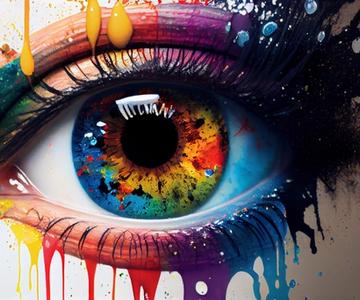Brand Voice: How to Find Your Unique Sound

Your brand is more than just a logo or a product; it's the holistic experience people have with your business. And a significant part of that experience is your brand voice. This is why your brand voice matters – it's the way you communicate with your audience and express your brand personality.
What are Brand Archetypes?
Brand archetypes are universal, recognizable personality types that help brands establish their tone and connect with their audience on an emotional level. Understanding these archetypes is crucial to finding your unique sound. Here are some examples:
The Creator: Innovative, imaginative, and artistic, these brands want to inspire self-expression and creativity. Apple and Lego are prime examples.
The Sage: Wise, knowledgeable, and insightful, these brands want to help their audience understand the world around them. Think of Google's mission to organize the world's information or the educational content offered by National Geographic.
The Caregiver: Nurturing, compassionate, and selfless, these brands want to help and protect others. Think of Johnson & Johnson or St. Jude Children's Research Hospital.
The Innocent: Brands in this category are optimistic, pure, and simple. They evoke feelings of nostalgia, happiness, and safety. Think of Coca-Cola's classic advertising campaigns or Dove's focus on real beauty.
The Jester: Playful, humorous, and lighthearted, these brands want to bring joy and entertainment to their audience. Old Spice and M&M's are known for their comedic advertising.
The Magician: These brands are visionary, transformative, and capable of creating extraordinary experiences. Disney and Tesla are good examples.
The Ruler: Confident, powerful, and in control, these brands want to create order and stability. Think of Rolex or Mercedes-Benz.
The Hero: Courageous, determined, and inspiring, these brands want to make the world a better place. Think of Nike's "Just Do It" slogan or the powerful imagery used by the U.S. Marines.
The Regular Guy: These brands are relatable, friendly, and down-to-earth. They want to connect with the average person and create a sense of belonging. Levi's and Target exemplify this archetype.
The Rebel: These brands are nonconformist, disruptive, and challenge the status quo. They want to break the rules and inspire others to do the same. Harley-Davidson and Virgin are great examples of this archetype.
The Explorer: These brands are adventurous, independent, and eager to discover new things. They encourage their audience to embrace freedom and exploration. Jeep and Patagonia fall into this category.
The Lover: Passionate, sensual, and intimate, these brands want to create emotional connections and foster a sense of belonging. Victoria's Secret and Godiva Chocolate embody this archetype.
Establishing Your Tone
Once you have identified your brand archetype, it's time to establish your tone of voice. This involves considering the following:
Language: What kind of words and phrases will you use? Will your tone be formal or informal? Will you use industry jargon or plain language?
Style: Will your writing be concise and to-the-point or more descriptive and elaborate? Will you use humor or maintain a serious tone?
Imagery: What kind of visuals will you use to support your brand voice? Will you use bright, bold colors or a more muted palette? Will you use photographs or illustrations?
Tips on What to Avoid
Inconsistency: Your brand voice should be consistent across all channels and touchpoints. Inconsistent messaging will confuse your audience and dilute your brand identity.
Being inauthentic: Don't try to be someone you're not. Your brand voice should be a reflection of your values and personality.
Ignoring your audience: Your brand voice should resonate with your target audience. If your tone doesn't appeal to them, they're unlikely to engage with your brand.
The most important thing is to be authentic and true to your values. Your brand voice should be a natural extension of who you are as a business.
Yo Marketing can help you find your unique sound
At Yo Marketing, we specialize in helping businesses develop and refine their brand voice. We can work with you to identify your archetype, establish your tone, and create a consistent messaging strategy across all channels. Contact us today to learn more.














